Abstract
Five years ago, a task force on reducing risk for heart disease and stroke was established by the six New England States. The task force included representatives from State public health departments, academia, the corporate sector, and voluntary organizations. This article is the final report of the task force. Heart disease and cerebrovascular disease are major causes of mortality in the New England region. Heart disease causes nearly 40 percent of all deaths in each of the six States and cerebrovascular disease, 7 percent of the deaths. Major risk factors for ischemic heart disease that have been identified--elevated serum cholesterol, high blood pressure, and cigarette smoking--are caused largely by lifestyle behaviors. Similarly, cerebrovascular disease results largely from uncontrolled high blood pressure, much of which is attributable to unhealthy lifestyle behaviors. In a series of studies evidence has accumulated that the reduction or elimination of these risk factors results in a decline in mortality rates. Many intervention programs have been mounted in the region, but there has been no population-wide effort to attack these risk factors. The task force proposed a broad range of activities for New Englanders at sites in the community and in health facilities. These activities would promote not smoking, exercising regularly, and maintaining desirable levels of serum cholesterol and blood pressure.
Full text
PDF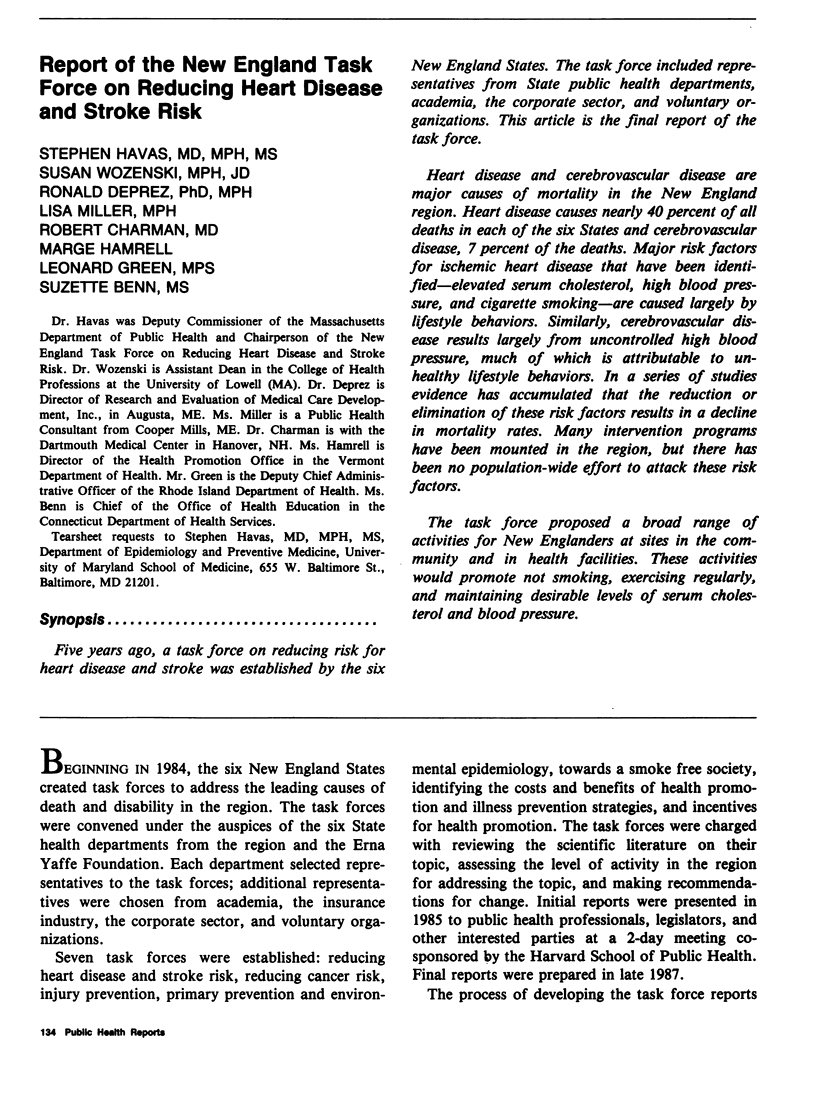
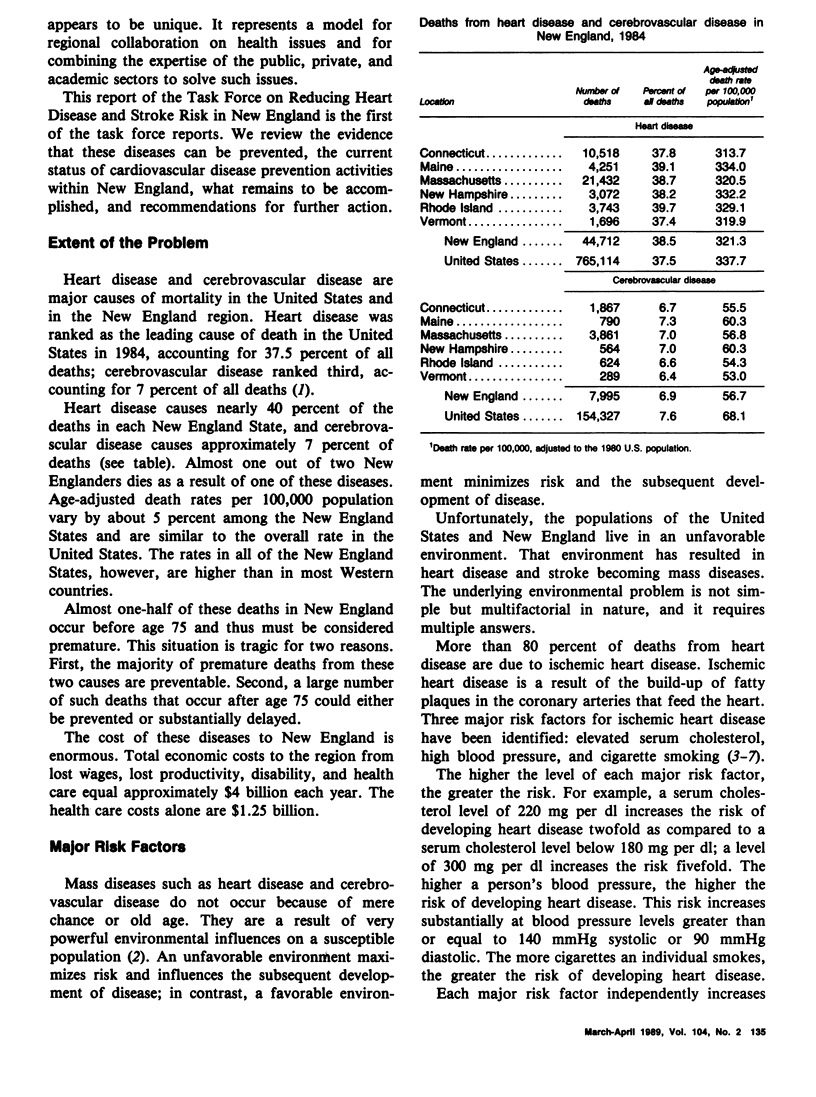
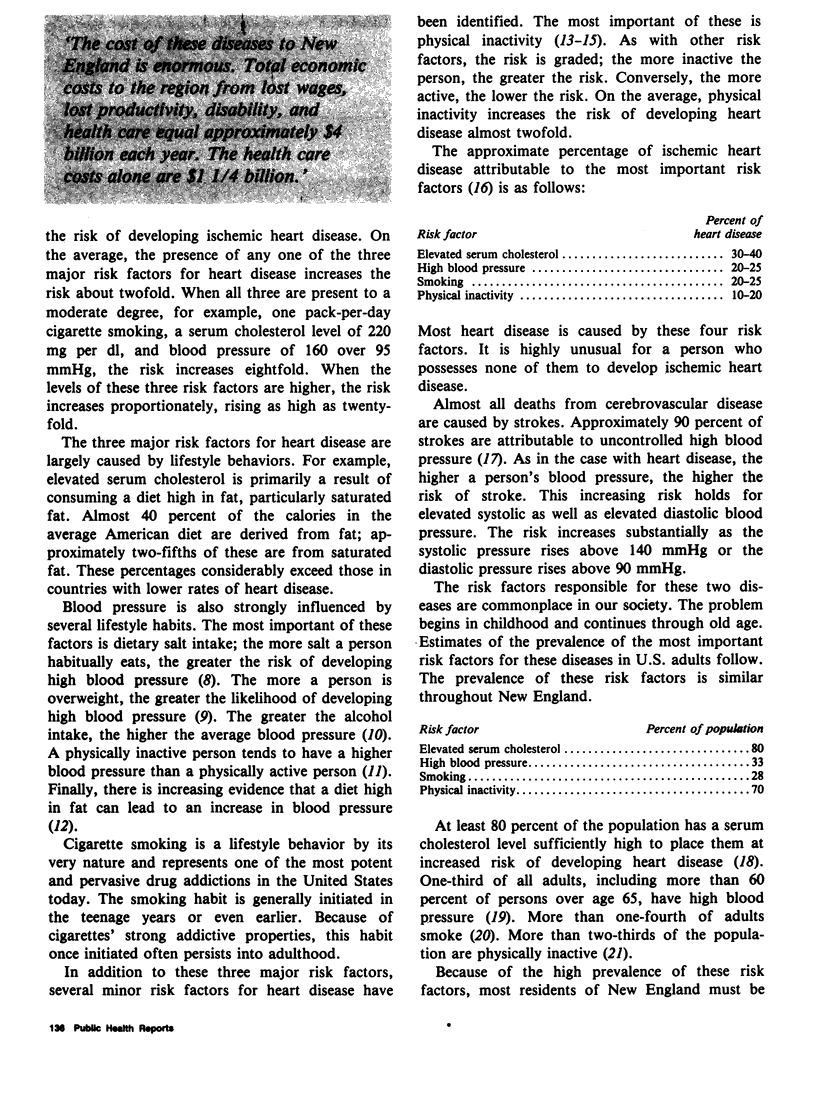
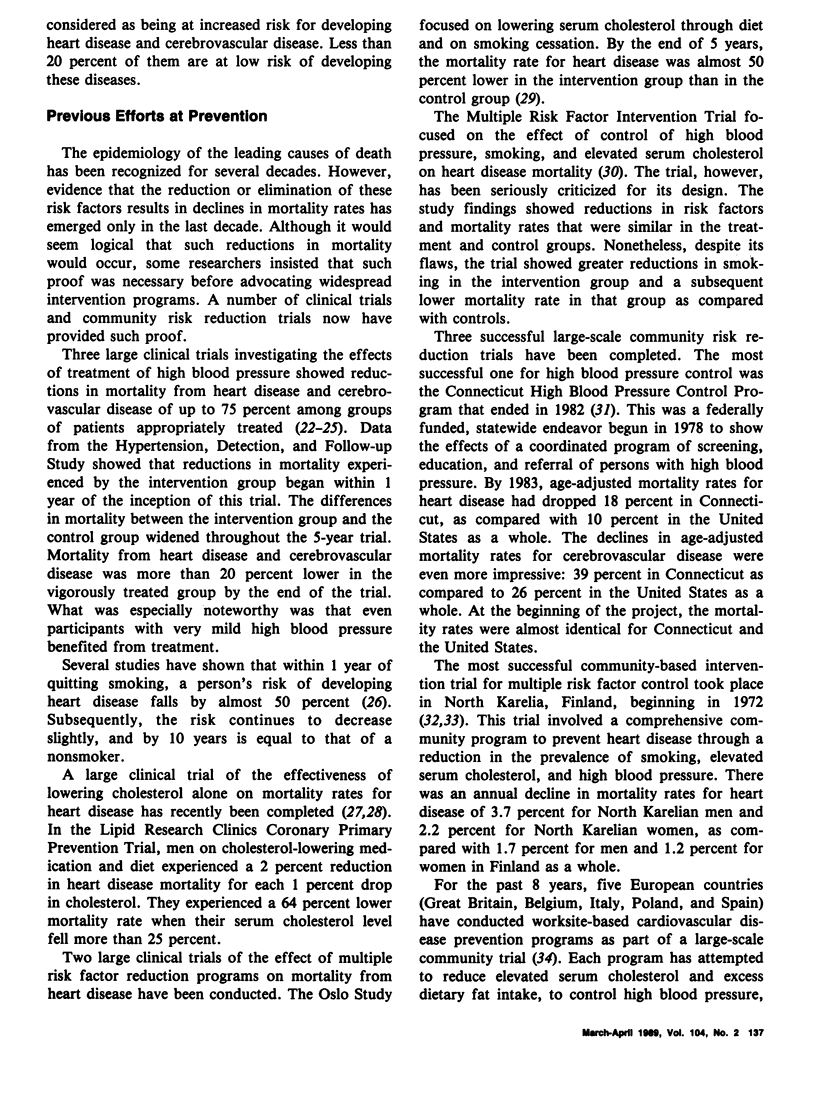
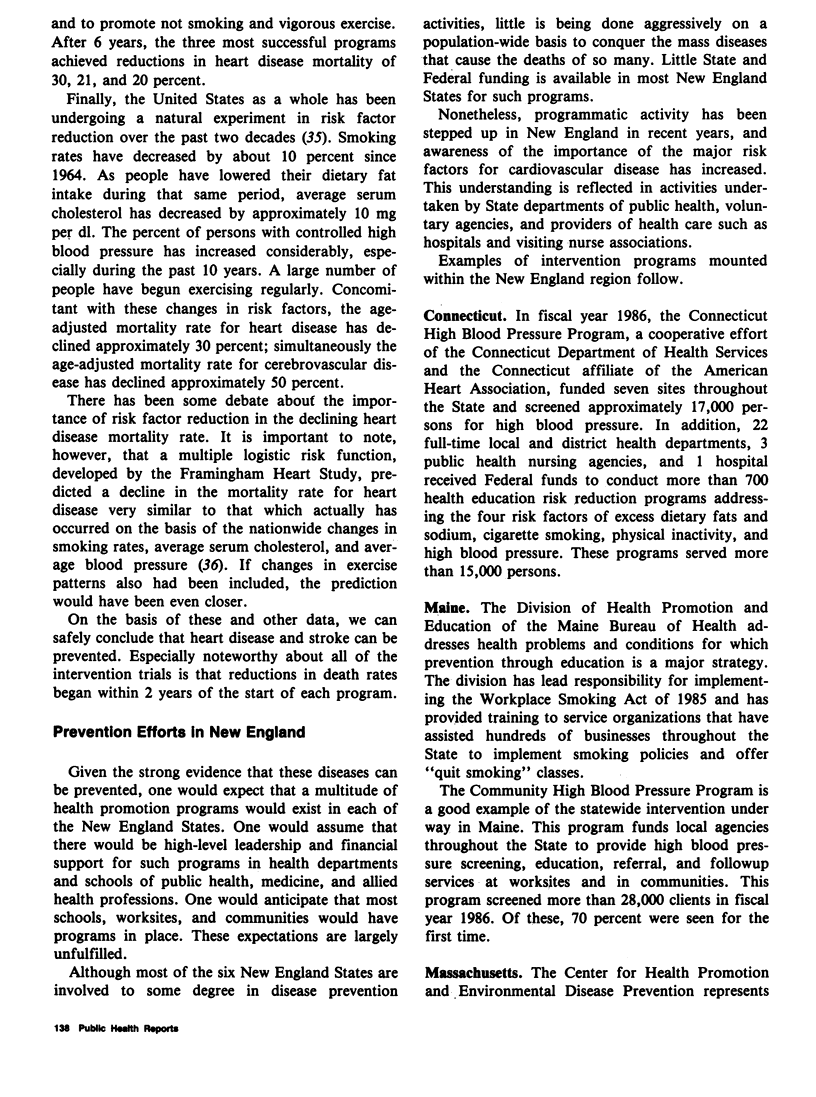
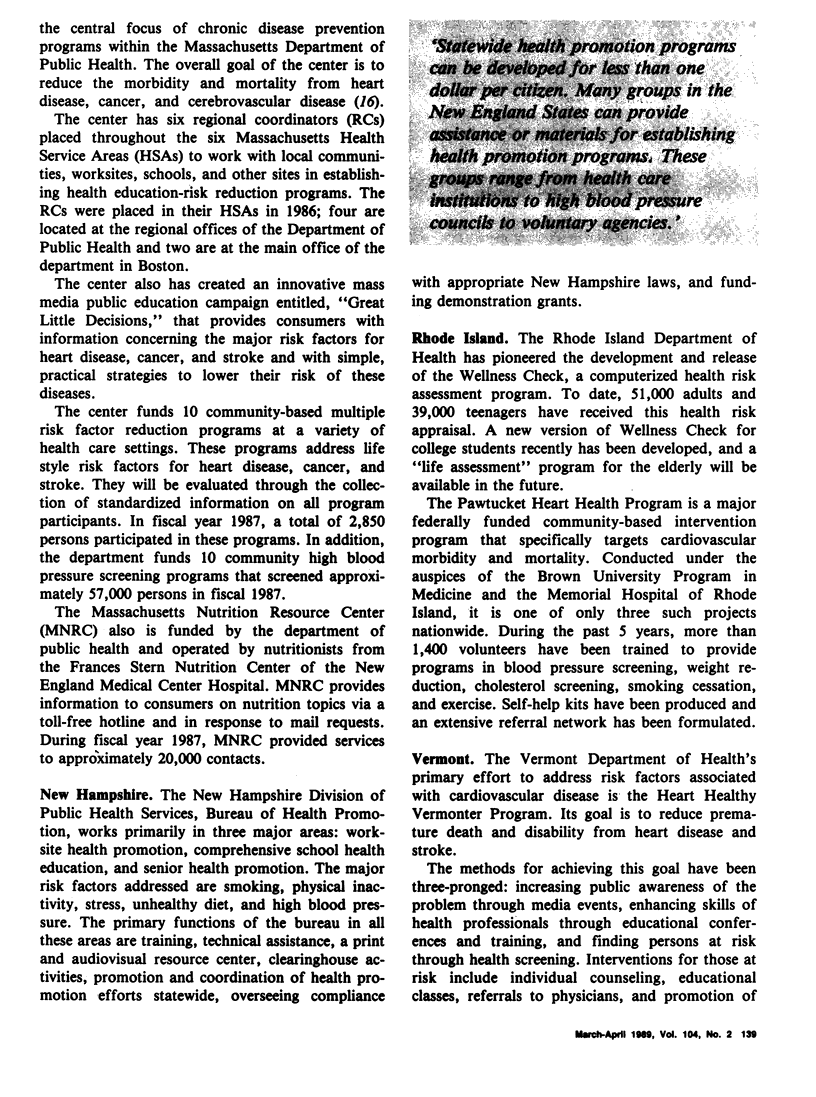
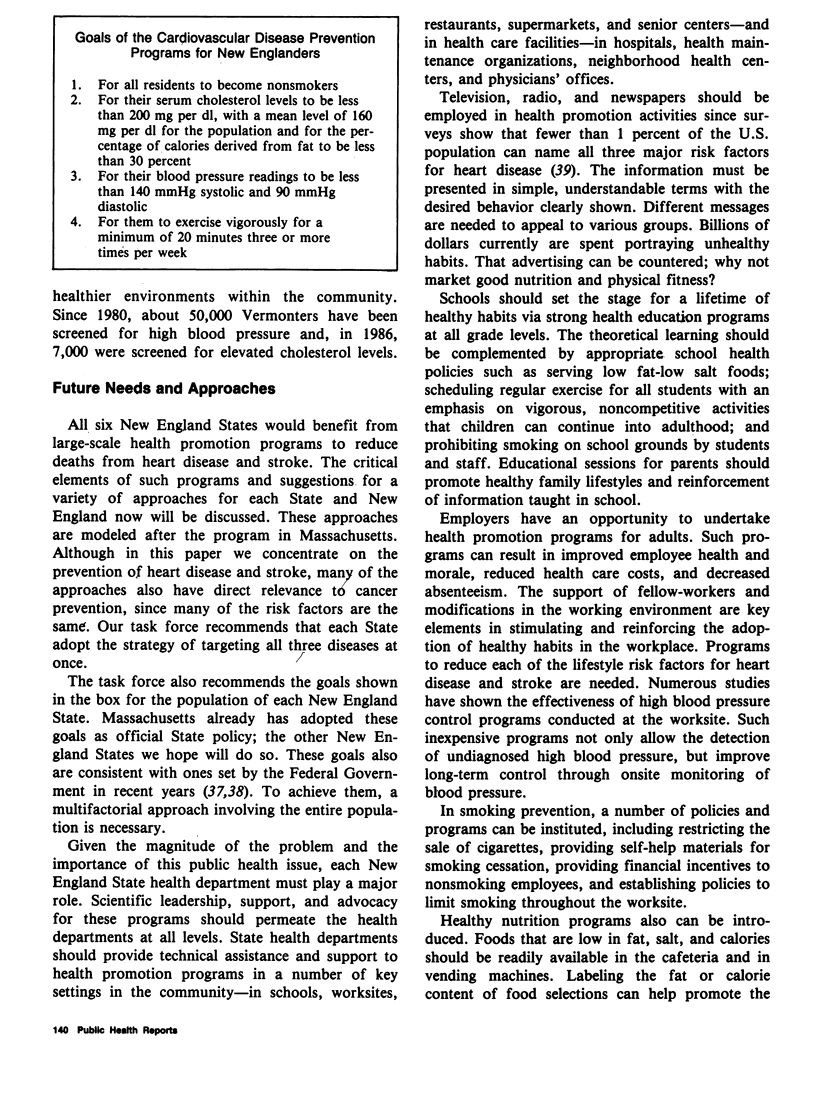
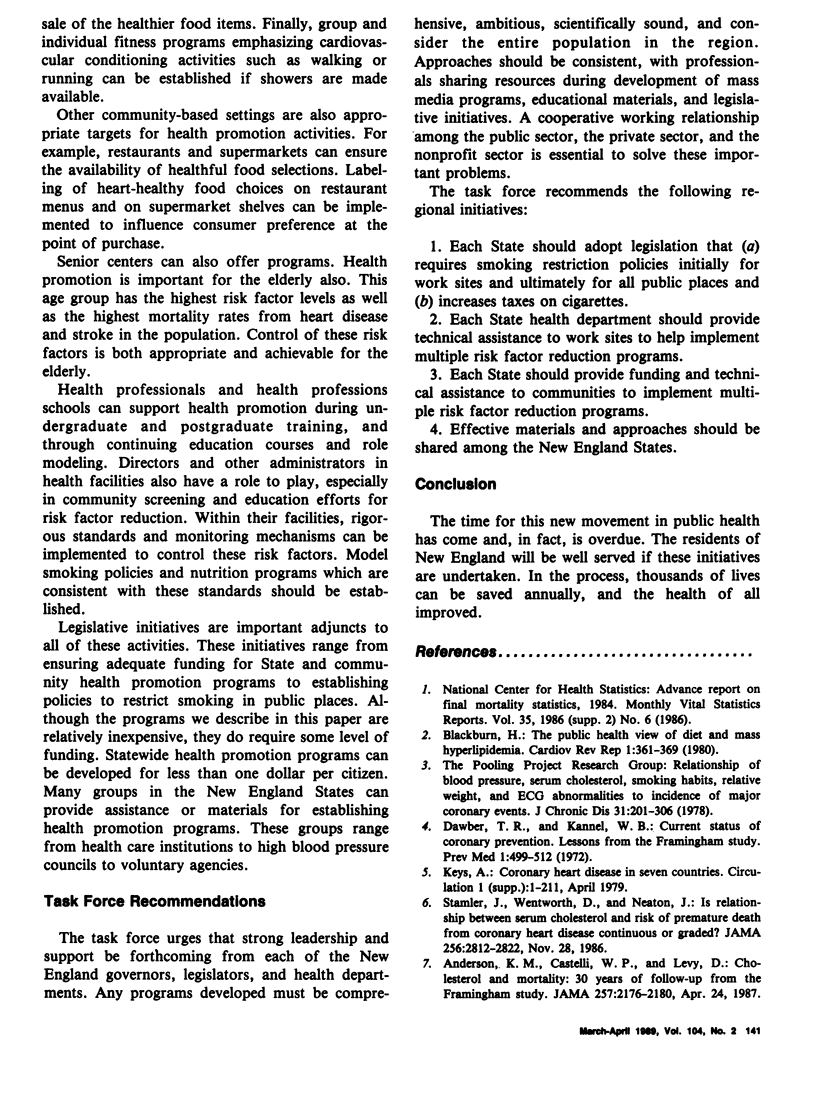
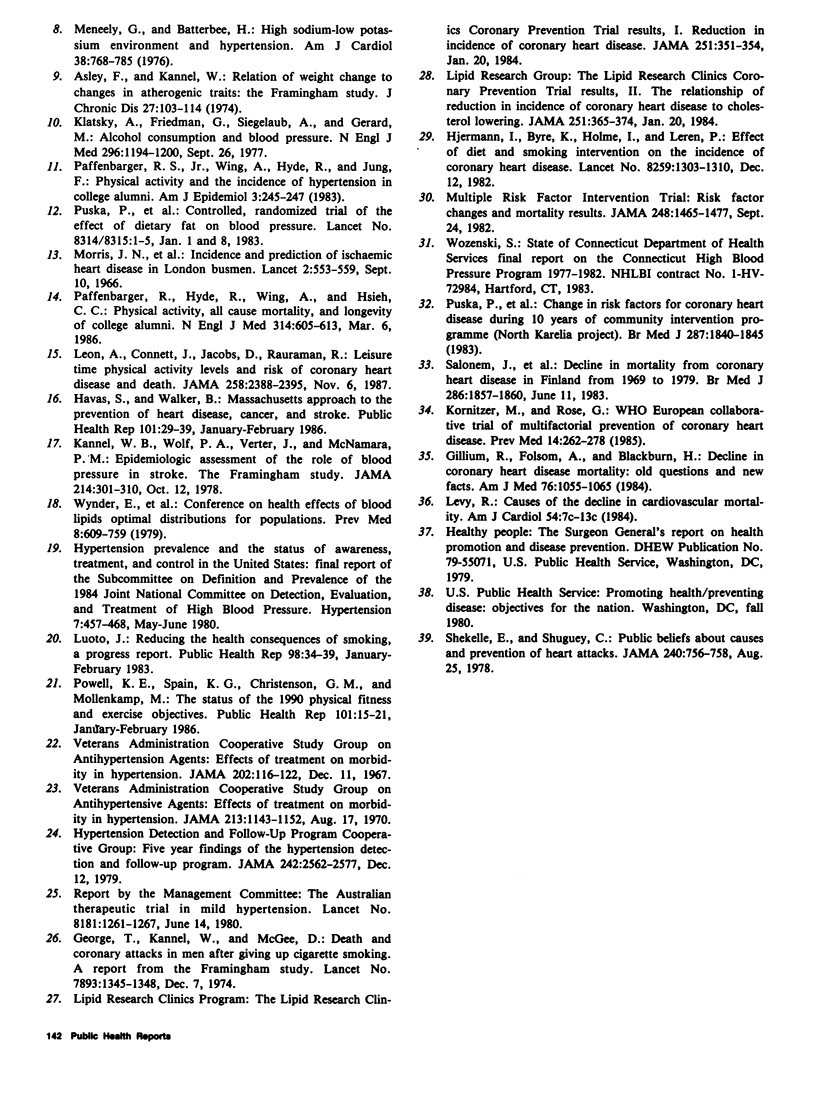
Selected References
These references are in PubMed. This may not be the complete list of references from this article.
- Anderson K. M., Castelli W. P., Levy D. Cholesterol and mortality. 30 years of follow-up from the Framingham study. JAMA. 1987 Apr 24;257(16):2176–2180. doi: 10.1001/jama.257.16.2176. [DOI] [PubMed] [Google Scholar]
- Ashley F. W., Jr, Kannel W. B. Relation of weight change to changes in atherogenic traits: the Framingham Study. J Chronic Dis. 1974 Mar;27(3):103–114. doi: 10.1016/0021-9681(74)90079-4. [DOI] [PubMed] [Google Scholar]
- Dawber T. R., Kannel W. B. Current status of coronary prevention. Lessons from the Framingham study. Prev Med. 1972 Dec;1(4):499–512. doi: 10.1016/0091-7435(72)90032-1. [DOI] [PubMed] [Google Scholar]
- Gillum R. F., Folsom A. R., Blackburn H. Decline in coronary heart disease mortality. Old questions and new facts. Am J Med. 1984 Jun;76(6):1055–1065. doi: 10.1016/0002-9343(84)90857-x. [DOI] [PubMed] [Google Scholar]
- Havas S., Walker B., Jr Massachusetts' approach to the prevention of heart disease, cancer, and stroke. Public Health Rep. 1986 Jan-Feb;101(1):29–39. [PMC free article] [PubMed] [Google Scholar]
- Kannel W. B., Wolf P. A., Verter J., McNamara P. M. Epidemiologic assessment of the role of blood pressure in stroke. The Framingham study. JAMA. 1970 Oct 12;214(2):301–310. [PubMed] [Google Scholar]
- Klatsky A. L., Friedman G. D., Siegelaub A. B., Gérard M. J. Alcohol consumption and blood pressure Kaiser-Permanente Multiphasic Health Examination data. N Engl J Med. 1977 May 26;296(21):1194–1200. doi: 10.1056/NEJM197705262962103. [DOI] [PubMed] [Google Scholar]
- Kornitzer M., Rose G. WHO European Collaborative Trial of multifactorial prevention of coronary heart disease. Prev Med. 1985 May;14(3):272–278. doi: 10.1016/0091-7435(85)90056-8. [DOI] [PubMed] [Google Scholar]
- Leon A. S., Connett J., Jacobs D. R., Jr, Rauramaa R. Leisure-time physical activity levels and risk of coronary heart disease and death. The Multiple Risk Factor Intervention Trial. JAMA. 1987 Nov 6;258(17):2388–2395. [PubMed] [Google Scholar]
- Levy R. I. Causes of the decrease in cardiovascular mortality. Am J Cardiol. 1984 Aug 27;54(5):7C–13C. doi: 10.1016/0002-9149(84)90850-6. [DOI] [PubMed] [Google Scholar]
- Luoto J. Reducing the health consequences of smoking--a progress report. Public Health Rep. 1983 Jan-Feb;98(1):34–39. [PMC free article] [PubMed] [Google Scholar]
- Meneely G. R., Battarbee H. D. High sodium-low potassium environment and hypertension. Am J Cardiol. 1976 Nov 23;38(6):768–785. doi: 10.1016/0002-9149(76)90356-8. [DOI] [PubMed] [Google Scholar]
- Morris J. N., Kagan A., Pattison D. C., Gardner M. J. Incidence and prediction of ischaemic heart-disease in London busmen. Lancet. 1966 Sep 10;2(7463):553–559. doi: 10.1016/s0140-6736(66)93034-0. [DOI] [PubMed] [Google Scholar]
- Paffenbarger R. S., Jr, Hyde R. T., Wing A. L., Hsieh C. C. Physical activity, all-cause mortality, and longevity of college alumni. N Engl J Med. 1986 Mar 6;314(10):605–613. doi: 10.1056/NEJM198603063141003. [DOI] [PubMed] [Google Scholar]
- Paffenbarger R. S., Jr, Wing A. L., Hyde R. T., Jung D. L. Physical activity and incidence of hypertension in college alumni. Am J Epidemiol. 1983 Mar;117(3):245–257. doi: 10.1093/oxfordjournals.aje.a113537. [DOI] [PubMed] [Google Scholar]
- Powell K. E., Spain K. G., Christenson G. M., Mollenkamp M. P. The status of the 1990 objectives for physical fitness and exercise. Public Health Rep. 1986 Jan-Feb;101(1):15–21. [PMC free article] [PubMed] [Google Scholar]
- Puska P., Salonen J. T., Nissinen A., Tuomilehto J., Vartiainen E., Korhonen H., Tanskanen A., Rönnqvist P., Koskela K., Huttunen J. Change in risk factors for coronary heart disease during 10 years of a community intervention programme (North Karelia project). Br Med J (Clin Res Ed) 1983 Dec 17;287(6408):1840–1844. doi: 10.1136/bmj.287.6408.1840. [DOI] [PMC free article] [PubMed] [Google Scholar]
- Shekelle R. B., Liu S. C. Public beliefs about causes and prevention of heart attacks. JAMA. 1978 Aug 25;240(8):756–758. [PubMed] [Google Scholar]


